Peripheral Vision: Views from the Borderlands is the programme’s bi-annual news bulletin, exploring new and emerging issues across our focus regions.
Localisation in the humanitarian and development sector involves shifting power and resources into the hands of local actors and delivery partners to improve the efficiency, effectiveness and ownership of humanitarian action. A core objective of XCEPT’s Local Research Network, is to emphasise the need for local knowledge and analysis to be reflected in international responses to conflict and support to peacebuilding. Engaging with and amplifying ground-level research supports a more nuanced understanding of complex conflict contexts, counteracting state-centric policymaking that can end up neglecting the needs of communities in border regions. Local knowledge is critical for building reliable and robust datasets that accurately reflect the experiences and perspectives of local communities. In this podcast, The Asia Foundation’s Nathan Shea speaks to three researchers undertaking data collection and analysis in Bangladesh, Somalia and Syria. They share their experiences working in conflict-affected border regions, discuss methods for engaging with local populations in challenging contexts, and share their insights on how to improve localization efforts in the research sector.
Disclaimer: The opinions, findings, and conclusions stated herein are those of the speakers and do not necessarily reflect those of XCEPT.
In 2014, Islamic State (IS) took over the city of Mosul in Iraq. Thousands of people were killed, and almost one million were displaced. IS also attacked Mosul’s proud history of co-existence among its diverse communities, destroying churches, mosques, shrines, and heritage sites.
IS has now been pushed out of Mosul, but with memories of conflict embedded in the walls of the city, how can Moslawis begin to move forward?
Read Dr Inna Rudolf’s and Dr Craig Larkin’s policy briefing on post-IS reconciliation in Iraq.
In a speech given on Hezbollah’s 11 November Martyrs’ Day in 2021, the group’s Secretary-General, Hassan Nasrallah, stated that “it was with the blessing of these martyrs” that there exists “passion, nostalgia, love, adoration, psychological solace, and a lively spirit in Lebanon”.[i]
Ideas of ‘martyrdom’ in the Middle East first rose to prominence in academic scholarship in the mid-2000s, when the term became incorporated into the War on Terror zeitgeist, due in part to the perceived “numerous religiously motivated suicide-attacks in conflicts all over the world where the recourse on martyrdom discourses has been made prominent”.[ii] The vast amount of literature on martyrdom in the context of Muslim theologies and societies – its connection to radicalisation, jihad and suicide bombing, the use of the martyr as a weapon, and Western perceptions and receptions to martyrdom as a “an Islamic culture of death” – sought to construct a totalising Islamic martyrdom institution in order to find solutions to the threat of terrorism.[iii]
Yet, contrary to popular studies of radicalisation and extremism, martyrdom is not a priori. An individual does not become a martyr solely through having died and/or suffered, but is constructed as such by the societies, institutions, and other individuals who memorialise them, as part of a continuation of a lineage of centuries of theological and societal memory practice. In Lebanon, a country constituted by diverse ethnic and religious identities with a long history of intra-community conflict, martyrdom continues to be one of the most significant and mobilising carriers of memory in contemporary discourse. Narratives expand and re-shape according to cycles of violence: the martyr as hero, victim, national icon, resistance fighter; the ‘everyday’ man and the holy representative.
Most writings on political Lebanon and memorialisation acknowledge the “walls continually adorned with banners, posters, portraits immortalising iconic images and infamous slogans, an informal cornucopia of the ‘living dead’”, and “the legions of martyrs on the walls”.[iv] Yet, not many young Beirut residents could tell the story of the memorial at the centre of Martyrs’ Square, the focal point of Downtown Beirut. Why, then, are some martyr figures and narratives highlighted in memory, and others demoted? To what extent is this shifting? Whilst diverse in their representation, contemporary conceptualisations of martyrs in Lebanon serve three major functions: identity construction, legitimation and mobilisation.
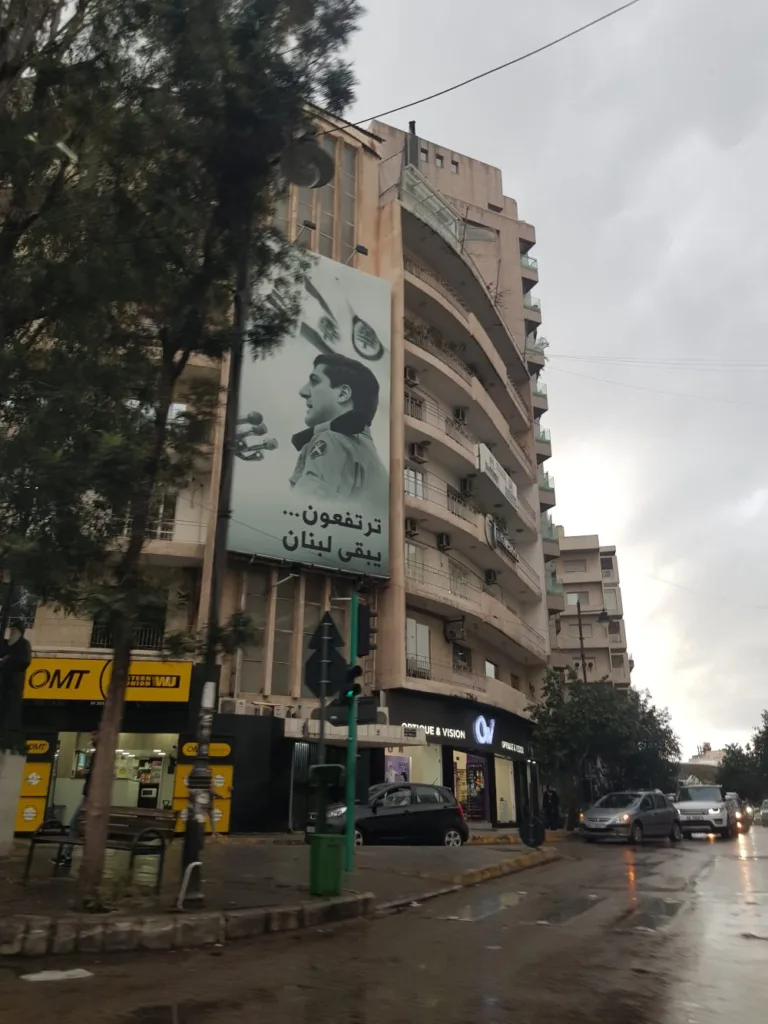
Functions of martyrdom
The most defining period of contemporary martyrdom construction was Lebanon’s Civil War (1975-1990). The series of sectarian battles, massacres and evictions established a competitive field of discourse, in which martyrdom was established as “a coveted currency that parties strived to display”.[v] The memory of the dead served less as a unifying discourse, but a battleground. Each party and militia claimed to have martyrs of a particular cause, opposing the vision of others. Political leaders took advantage of the emotive memory vector of martyrdom, “not necessarily because they believed in the concept but only as a means to an end.”[vi] Martyrdom posters, now an institution in contemporary Lebanon, became a major competitive industry, carving out schisms between communities. These visual representations constituted “a relentless battle for signs and symbolic appropriation of territory”, marking out allied streets, shops, universities, places of worship and front lines.[vii]
Through martyrdom, memory could be flexed to serve a range of different purposes. Reminders of the sacrifices gave not only new combatants a cause to fight for, but current combatants a reason to continue fighting. Narratives of sacrifice also became a useful tool for parties to reframe their losses, through conceptualising martyrs as heroic defenders of the community and demonstrating the party’s legitimacy. Some parties even provided details about the way their martyrs died in an attempt to prove beyond doubt that they had ‘offered blood’. As Dabbous et al. explain, ”instead of saying ‘We lost four people’, the PLFP [Popular Front for the Liberation of Palestine] would say ‘We offered four martyrs’.
Military defeat suddenly became an honourable tribute to the party’s heroism and authority.”[viii] This became particularly significant with the deaths of party leaders. After the death of Progressive Socialist Party Leader Kamal Jumblatt in 1977 and Lebanese Forces leader Bashir Gemayel in 1982, images of the ‘martyred’ leaders became prolific in martyrdom posters, demonstrating the faithful commitment of the party to the vision of their leaders and the preservation of the party after their deaths.
Ironically, the competitive field of martyrdom did not end with the arrival of the Ta’if Agreement in 1991, and the end of the period of conflict. Instead, the combination of state-sponsored “collective amnesia” and continued violence and unrest in Lebanon created a vacuum for a proliferation of martyrdom narratives. [ix] Habitual violence and its memorialisation normalised a “hypertrophy of memory” in the form of martyrdom memorial monuments, posters and billboards, museums, documentaries and social media campaigns.[x]
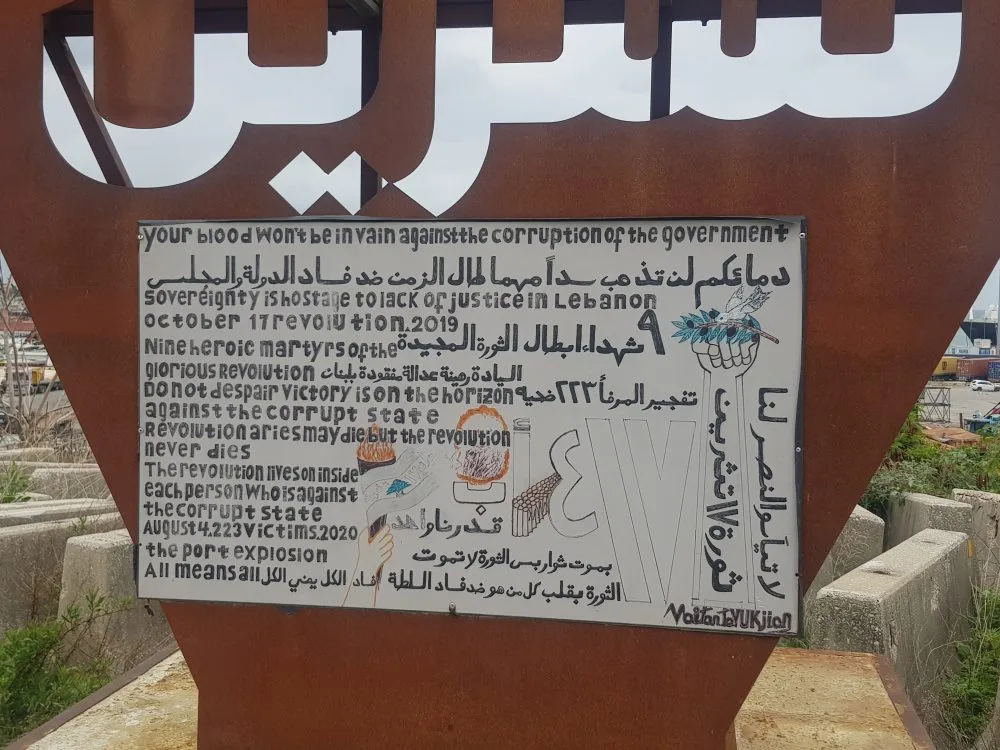
Although there were various attempts by political leaders and civil society at memorialisation of collective martyrs in the 1990s, there were, and remain, no collective martyrs of the Civil War recognised by a unified Lebanon, only sectarian schisms of memory, competing for the category of martyrs. Currently, there are more than 28 war memorials in Lebanon, and at least four (and counting) different martyrs’ days alternative to that celebrated by the centralised state. [xi]
Although Lebanon has not descended again into full-scale civil conflict, a key function of martyrdom memorialisation in contemporary Lebanon continues to be mobilisation: to remember past sacrifices, revitalised by ‘new’ conflicts and episodes of violence, and to conceptualise the more recent dead as a continuation of the community martyrdom lineage. Political commemorations of martyrdom post-Civil War have as much to do with the present as the past, in an ongoing anticipation of future violence.[xii]
Personalities of martyrdom
The icon of an individual remains an important part of contemporary martyrdom discourse. Rafic Hariri, Lebanon’s former post-war prime minister and the foremost politician to have been killed in the wave of assassinations in 2005, is memorialised as a martyr of the state. His memorial is located in close proximity to the Martyrs’ Memorial statue in Martyrs’ Square and the imposing structure he endowed, the Mohammed al-Amin mosque. Large billboards mark his domain of Downtown Beirut with visual representations of Hariri himself and the slogan “we will not forget [you]”, a continuation of the icons of religious martyrdom and the posters of the dead leaders of the Civil War.
Whilst the positioning of Hariri in the centre of Lebanon’s capital, and as a symbol of post-war unification, suggests an appeal to a national martyrdom, such memorialisations mark an important divisive aspect of the discourse of martyrdom in contemporary Lebanon: competitive legitimacy. Hariri memorialisations often bear the additional slogan, “truth”. There is no tradition for prosecuting and punishing political murders in Lebanon and, as such, the perpetrators of Hariri’s assassination have never been held to account. Martyrdom, in this context, serves the purpose of providing resolution (for not just Hariri in this instance, but also, through his iconisation, the state of Lebanon) and mobilising the population in calling for “truth”.[xiii]
Out of this competitive field, arguably the most prominent owner of martyrdom discourse in contemporary Lebanon is Hezbollah. Utilising the defining moment of the 2006 war of south Lebanon against Israel, Hezbollah industrialised martyrdom to position themselves as sole national defenders of the country of Lebanon. The militia’s perceived ‘divine and strategic victory’ over an Israeli invasion led to a shift in the group’s discourse away from localised militia narratives and into one of national defence. Secretary-General Nasrallah has even commented that “one of the martyrs’ achievements … was preventing a civil war in Lebanon, which is still lasting”.[xiv] In his eyes, Hezbollah gave blood for Lebanon when the state lacked capacity to defend itself.
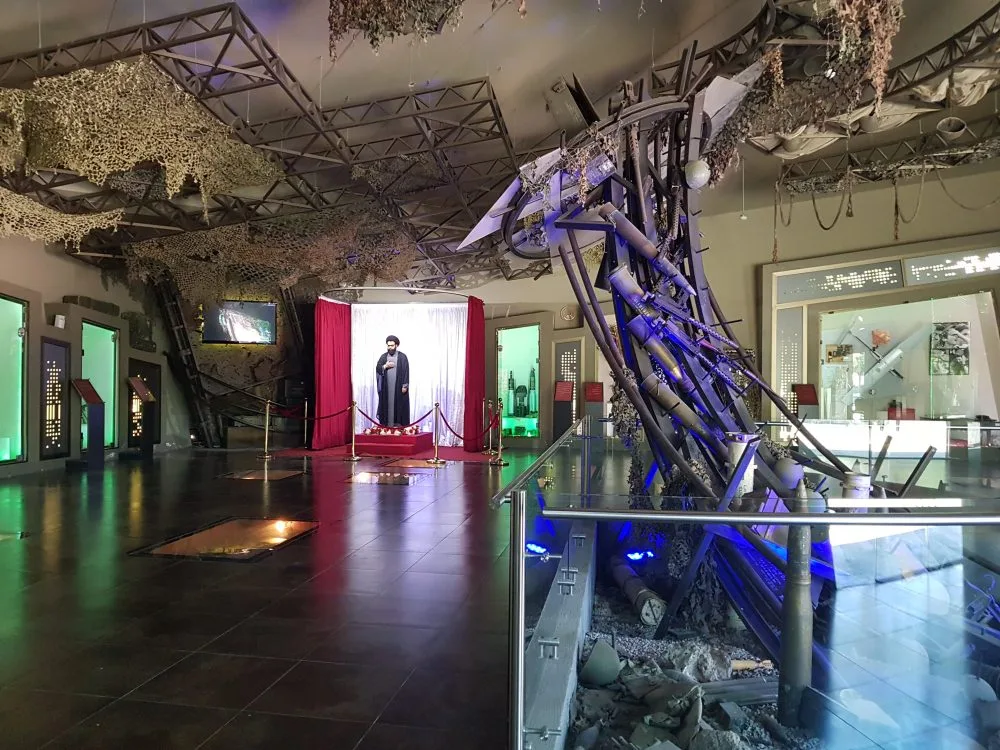
From this position, post-2006 Hezbollah’s martyrdom ‘industry’ successfully managed to monopolise the martyrdom discourse of Lebanon, with a designated Martyrs’ Foundation and clear designations of categories of martyrdom which informs specific commemoration practices (often observed by party officials to ensure correct observance). In 2010, the group opened its commemorative Tourist Landmark of Resistance to the fallen of 2006, as a means of legitimising its memory narrative using the factualising mode of the museum. In this way, Hezbollah exerts control over how such memory continues to be commemorated and anticipates future violence, whereby the resistance movement includes martyrdom “as a part of its enduring struggle to defend the ‘oppressed’ from the ‘oppressor’”.[xv]
More recently, Hezbollah’s narrative of national defender is being challenged by corruption, crisis, and conflicts of the region, as well as the capacity of social media to broaden and disrupt the playing field of the discourse. The martyrs of Hezbollah’s intervention in Syria are significantly more contentious. Compared with the grandeur of the martyrdom museum of the 2006 war, positioned high on a hilltop and boasting 300,000 domestic and international visitors in its first year of opening, the memorial to the Hezbollah fighters killed in the conflict with Syria, the Garden of Zainab’s Poplar Trees mausoleum, is a relatively modest pale stone building, located in Hezbollah’s heartland of Dahieh.[xvi] There are no infographics, only Hezbollah regalia, and the room is plain and functional for the housing of 200 uniform graves.[xvii] These understated commemorations are memories for solidifying the group, rather than conquering a collective Lebanese martyrdom of national defence.
Martyrdom in an age of mass media
Institutional narratives of martyrdom have not gone unchallenged in contemporary martyrdom. The internet and social media have had a levelling, and rupturing, effect on the discourse, creating new forms of engagement and challenging traditional memory production. Televised documentaries and online media forge a martyr at a pace of minutes rather than days, while martyrdom material on social media can be created in minutes by anyone with a laptop or mobile phone and shared within seconds. The 2006 war prompted a proliferation of martyrdom content, much of it produced not by ‘memory makers’ of the political and social elite, but by the Lebanese population under the age of 30.[xviii] Many younger generations feel the discourse has been highly instrumentalised, with the ‘martyr’s body’ brutalised by political elites.
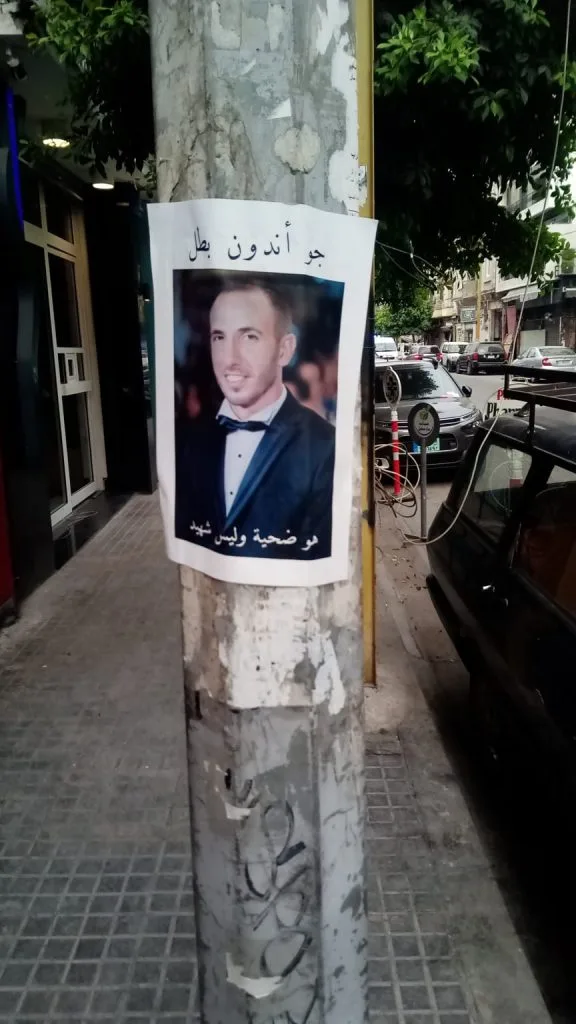
In 2014, the successful #NotAMartyr social media campaign was prompted by the death of 16-year-old student Mohammad Chaar in a car bomb in Beirut, as a protest against the use of the term which was seen to obscure the need for investigation and punishment of those responsible.[xix] There has also emerged a new wave of martyrs of political corruption, constructed by civil society and society outside of conventional ‘martyrdom makers’ through the use of social media. This includes individuals as symbols of resistance against political corruption (such as newspaper Al-Nahar editor, Gebran Tueni, assassinated in 2005, and co-founder of the Lebanese Civil War archive UMAM, Lokman Slim, assassinated in 2021); as icons of popular resistance (Alaa Abou Fakher, a protestor killed in the October 17 protests of 2019); and also as victims of such corruption (the dead of the Beirut port explosion in 2020).
The individual families of the dead of the Beirut port explosion in August 2020 have become focal points of martyrdom narratives which resist and challenge hegemonic ownership of memory. State attempts to commemorate the memory of the casualties have been largely resisted by the families of the martyrs, who perceive attempts to co-opt their memorialisation as a means of consoling the continued block on an independent investigation into the explosion.
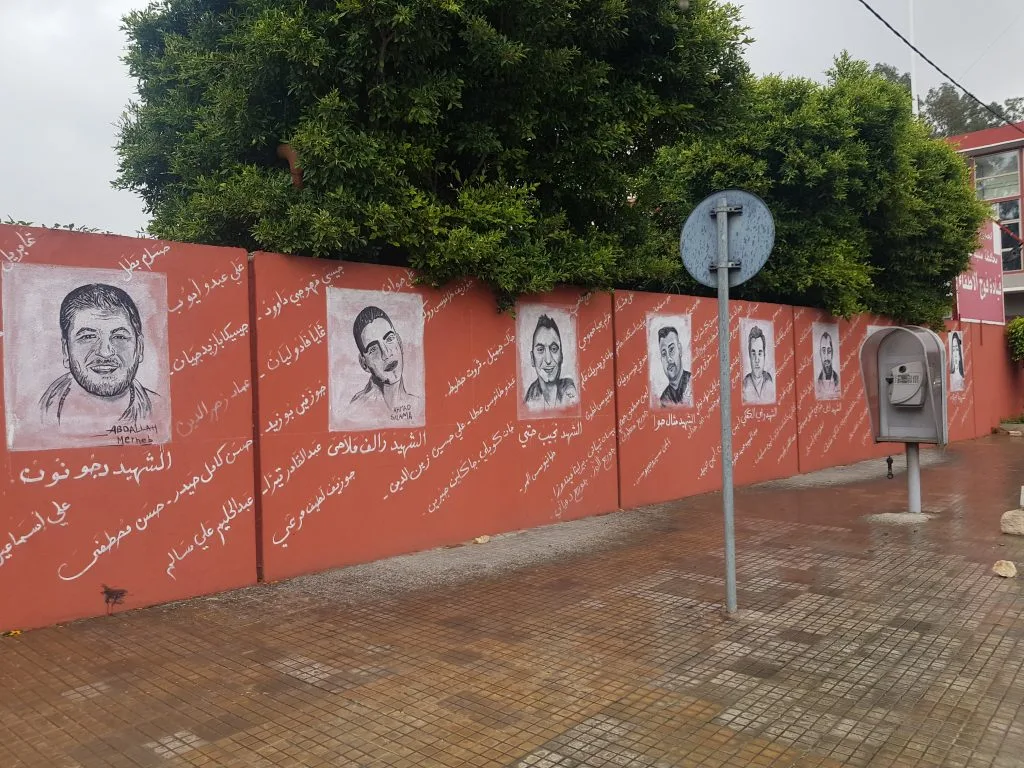
Demonstrations against the lack of progress are a form of martyr memorialisation: held on the fourth day of every month since the explosion, protestors hold posters showing the faces of the dead, with their names proceeded by diverse titles, such as ‘martyr of the state’, ‘hero martyr,’ and ‘martyr of corruption’. These new modes of martyrdom as a means of challenging political corruption through memory pose a threat to hegemonic powers in Lebanon; a memorial wall of the portraits of the martyrs installed by civil society was water blasted unexpectedly in 2023.
Martyrdom continues, and will continue, in Lebanon as a powerful tool for collective storytelling: shaping, passing down, and mobilising trauma through narratives which legitimise, control, and affirm group identity and, more recently, offer avenues of resistance. Whilst social media has opened up a larger, more diverse playing field for the creation and consumption of martyrdom material, the concept is not a new vehicle of memory, but one which is rooted in centuries of historical legacy and continually regurgitates and recycles itself. Martyrdom informs visions of the past, but, in so doing, it shapes the future of cycles of violence, revenge, and sectarianism.
Future martyrdom discourse looks to be even more diverse, prolific, and indeed democratised. According to Nayla Tueni, the daughter of the assassinated Gebran Tueni, “martyrdom itself is a cause that must be restudied; the basis and conditions of which must be specified considering some youths are being deceived. They are being deceived into believing in causes which are not actually patriotic, religious or humane but which actually serve certain parties’ personal aims.”[xx]
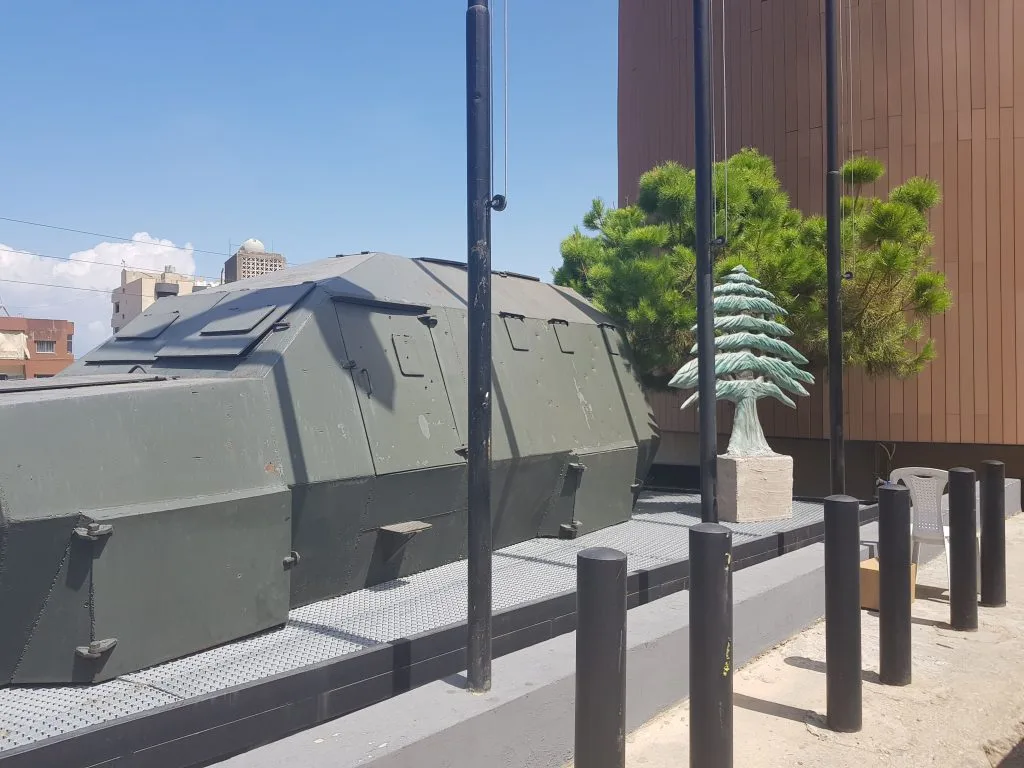
This article was originally published on the ICSR website.
Citations
[i] ‘Nasrallah delivers speech on occasion of Hezbollah Martyr’s Day’, Iran Press, 11 November 2021. https://iranpress.com/content/49968/nasrallah-delivers-speech-occasion-hezbollah-martyr-day
[ii] Gölz, “Martyrdom and the Struggle for Power. Interdisciplinary Perspectives on Martyrdom in the Modern Middle East,” 9.
[iii] Khosrokhavar, Afsaruddin, Cook, Understanding and Addressing Suicide Attacks. Janes and Houen, Martyrdom and Terrorism: Pre-modern to Contemporary Perspectives; Slavicek, “Deconstructing the Shariatic Justification of Suicide Bombings.”; Pape, Dying to Win. The Strategic Logic of Suicide Terrorism; Reuter, My Life Is a Weapon; Asad, On Suicide Bombing; Hatina, Martyrdom in Modern Islam. Piety, Power and Politics; Cook, Martyrdom in Islam.
[iv] Larkin, Memory and Conflict in Lebanon, 158; Fisk, Pity the Nation, 93.
[v] Dabbous, Dabbous, and Nasser, “‘Across the Bridge of Death’, the Culture of Martyrdom in Lebanon 1960s-1980s,” 610–11.
[vi] Dabbous, Dabbous, and Nasser, 610.
[vii] Maasri, Off The Wall, 3.
[viii] Dabbous, Dabbous, and Nasser, 610–11.
[ix] Haugbolle, War and Memory in Lebanon, 102.
[x] Huyssen, “Present Pasts,” 3.
[xi] Hermez, War Is Coming, 154–55.
[xii] Hermez, 151–52.
[xiii] Knudsen, “Death of a Statesman – Birth of a Martyr,” 1.
[xiv] ‘Hezbollah leader: Militants ‘won’t surrender arms’,’ CNN, 22 September 2006. https://edition.cnn.com/2006/WORLD/meast/09/22/lebanon.rally/
[xv] Kızılkaya, “Hizbullah’s Moral Justification of Its Military Intervention in the Syrian Civil War,” 213.
[xvi] ‘Hezbollah-land’ Attracting Jihad Tourists,’ ABC News, 15 July 2010. https://abcnews.go.com/International/Travel/hezbollahland-war-meets-tourism-lebanon/story?id=11173351
[xvii] “Inside the Mausoleums of Hezbollah’s Secret Syria Dead,” TRT World, 27 July 2018. https://www.trtworld.com/magazine/inside-the-mausoleums-of-hezbollah-s-secret-syria-dead-19171
[xviii] Haugbolle, War and Memory in Lebanon, 236.
[xix] ‘Outraged Lebanese protest teenager’s death with #notamartyr campaign,’ CNN, 23 January 2014. https://edition.cnn.com/2014/01/22/world/meast/lebanon-not-a-martyr-campaign/index.html;
‘#BBCtrending: Lebanon’s #notamartyr selfie protest,’ BBC News, 6 January 2014. https://www.bbc.co.uk/news/blogs-trending-25623299
[xx] ‘On Martyrdom in Lebanon,’ Nayla Tueni, An Nahar, 3 February 2014. https://english.alarabiya.net/views/news/middle-east/2014/02/05/On-martyrdom-in-Lebanon
I’m Dr Fiona McEwen, and I’m the Survey and Interventions Director for the XCEPT project at King’s College London. I’m responsible for managing a large longitudinal survey and a range of associated data collection, as well as interventions, that we’re doing in Iraq, South Sudan, and Syria/Lebanon.
We know that many people living in conflict-affected zones experience potentially traumatic events and that this can have a significant impact on their mental health. But conflict also has many other effects, such as damaging trust in institutions and decreasing social cohesion. The aim of the research we’re doing at King’s is to understand whether trauma-related mental health problems may have the potential to increase people’s propensity to seek violent, or peaceful, solutions, and how that might interact with a range of other factors. The Impact of Trauma Survey (IoTS) is a huge part of this research. It will collect data on multiple different outcome measures, such as attitudes to reconciliation or the use of political violence, and many different risk and protective factors across time to try and understand how these factors work together.
One thing which is particularly exciting about the IoTS is that it’s longitudinal. There have been lots of studies conducted in difficult contexts like this, but these are often cross-sectional, which means data is collected at a single point in time. The IoTS allows us to explore how changes in a particular factor at one point in time might influence attitudes at a later point. It’s also looking at a much wider range of factors than many studies do. We know that factors at the individual level, like people’s dispositions and personality traits, can have an impact on violent or peaceful outcomes, but conflict exposure, mental health problems, and social factors all play a role too. The IoTS will increase our understanding of the interplay between all these factors and how they feed into cycles of violence.
In this context, the core aspect is that many people will have been exposed to war events, so they may have witnessed a bombing, or seen people killed, or they may have lost family members. There may be multiple other traumas in a person’s life, however, so we’ll also be looking at things like Adverse Childhood Experiences, such as abuse, neglect, and exposure to domestic violence.
We’re working on the assumption that there’s often a cumulative impact of these traumas. So, for example, someone who has had exposure to a major traumatic event during war, but otherwise benefits from protective factors like a supportive family, may not be affected by that single trauma as much as someone who also suffered maltreatment as a child. Where individuals have experienced a series of traumatic events throughout their lives, this can have an additive impact over time, and this is what we’re trying to account for, rather than assuming that, in a war-exposed population, trauma is related only to conflict.
I originally studied biological sciences – neuroscience and veterinary medicine – but then went on to study and do research in developmental psychology and psychiatry. Most recently, I worked as the study coordinator for a programme of research centred on Syrian refugee families in Lebanon. The study was looking at mental health and resilience in these children, who were living in really challenging conditions in informal tented settlements. There were quite a few similarities between that work and the research we’re doing now on XCEPT: we used a longitudinal design to study changes in children’s mental health and behaviour over time, and delivered an intervention aimed at reducing mental health problems in children exposed to conflict and displacement. One thing we found that was really important was being alert to the fact that measures developed in one setting will not necessarily be valid in other settings.
Accounting for different contexts and cultures when carrying out data collection like this is crucial. My colleague, Dr Nafees Hamid, and I were recently in Erbil, Iraq, training the field work team who are going to be collecting the IoTS data in the country, and it was a really useful process as it allowed us to understand how our survey questions might be interpreted differently in different contexts. There can be issues with the way things have been translated or with the concepts we’re exploring. Even within one country, it’s apparent there will be different interpretations according to dialect, for example. Differing experiences across the country may also mean a question could be interpreted in a certain way, or that it may be more sensitive to the interviewees. It’s vital that we understand those differences to make sure our measures are as good as they can be. When we’re interpreting the data, we really need that local input as well to help us understand how people might have been thinking about those issues.
There are so many really exciting things about the work the King’s team is doing for the XCEPT project. It’s rare that there are research programmes doing something so large-scale, and across multiple different countries, which allows you to make comparisons across countries. I was also really keen to join a multidisciplinary research project. To date, I’ve usually been working with psychologists, psychiatrists, and biologists, so it’s been great to have an opportunity to work with people from other disciplines, including sociologists and historians. It’s exposed me to a much wider range of research and ideas than I would have been otherwise. For the team, having all these different experts and perspectives also allows us to do much more powerful research.
Another thing that really drew me to the project was the opportunity to use nested interventions – for example, psychosocial interventions that some people receive between waves of survey data collection. The advantage of this is that, once we’ve hypothesised the mechanisms by which we think something might be happening, it allows us to then manipulate that and measure the response. For example, you can try and reduce someone’s trauma-related mental health symptoms, and then measure to see if that has an impact on other outcomes you think it might be related to, like the propensity to violence. It’s rare that you have studies where you’re combining large-scale observational data with intervention data as well, and it’s great to be a part of this.
One of the core driving questions we’re trying to explore is whether trauma-related mental health problems will have a subsequent impact on people’s behaviour or their attitudes to reconciliation. There’s an assumption that untreated trauma could act as a block on achieving stability post-conflict, but we don’t yet know if that’s true. Because our research allows us to control for lots of factors, I hope we’ll be able to get more conclusive data on whether untreated trauma itself causes a problem, or whether other factors have a bigger influence on people’s attitudes towards reconciliation.
Our work should allow us to understand more about these questions, and I hope this will result in useful policy and intervention implications. This is a very large, complicated project, and it takes a long time to prepare and build, so I’m really looking forward to seeing the data coming in, and then we can get to work running analyses across the team.